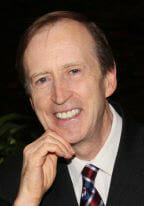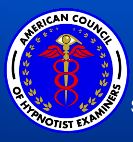The History of Transforming Therapy
By Dr. John Butler
 Transforming Therapy was strongly influenced by the work of renowned therapy pioneers in the 1950s and 1960s, in particular Fritz Perls and Carl Rogers and incorporated key concepts from Rollo May and other existential therapists along with the most powerful tools of classical hypnotism, traditional mind-healing concepts and the methods of radical hypnotherapy practitioners like Dave Elman. Gil Boyne studied with and, in some cases, worked with major figures in the therapy movements of the 50s and 60s as therapy broke from the strait-jacket of psychoanalysis. In the process he added new concepts and methods and forged his own approach to hypnotherapy designed to be as in-depth, precise, long-lasting and fast as possible.
Transforming Therapy was strongly influenced by the work of renowned therapy pioneers in the 1950s and 1960s, in particular Fritz Perls and Carl Rogers and incorporated key concepts from Rollo May and other existential therapists along with the most powerful tools of classical hypnotism, traditional mind-healing concepts and the methods of radical hypnotherapy practitioners like Dave Elman. Gil Boyne studied with and, in some cases, worked with major figures in the therapy movements of the 50s and 60s as therapy broke from the strait-jacket of psychoanalysis. In the process he added new concepts and methods and forged his own approach to hypnotherapy designed to be as in-depth, precise, long-lasting and fast as possible.
Gil Boyne shared the view with Perls that the most effective way to obtain progress and movement with a client who is stuck in inner conflict or deadlock, is to use the methods of drama and dialogue, and these are central to Transforming Therapy.
Transforming Therapy, like Roger’s counselling approach method is profoundly client-centered and Gil developed a powerful array of protocols to ensure that therapeutic choices in a session match the needs of the client’s subconscious mind.
Gil was highly influenced by the methods of Dave Elman, a master hypnotist and master communicator whose work he studied intensively. Gil continued developing hypnotherapeutic communications in an era, from the 1960s onwards, where clients were exposed to more sources of information, and consequently were more sophisticated and inclined to be questioning and critical. This has reached an intensive stage today, where clients have access to a wide range of mental and self-change techniques online.
Gil developed a naturalistic yet benevolently authoritative style, building up the therapeutic alliance through a highly interactive and responsive series of interchanges before moving to the hypnotic stage for intensive work. He was very aware of the need for the client’s doubts and questions to be addressed before moving to the deeper stage of working, and for the client to enter both consciously and subconsciously into the profound partnership which is enabled by hypnosis.
He was extensively experienced in inducing trance and monitoring subconscious movements and feedback from clients, honing his therapeutic choices to client’s responses. He knew that the rapport between an effective hypnotherapist and the client’s subconscious provides an unparalleled powerful and safe therapeutic state, and this maximises the client’s ability to draw on inner resources to address issues and choose to change.
The skills involved in becoming an effective Transforming Therapy practitioner are such that a high level of practice in self-hypnosis is recommended to attain and maintain the level of attention, power and flexibility required. The workshop includes materials and guidance for continued self-development in these aspects, as well as teaching on the repertory of roles and therapeutic traits the practitioner can draw on, during the course of a session or over the course of a multi-session therapy with a client.
In addition to a wide range of advanced hypnotherapy techniques, a high level of practitioner ability in interactive, client-centered responses, and a focus on powerful and effective inner dialogue methods, Gil Boyne believed that a truly comprehensive system for personal change needed to include a core element of human values.
Gil’s profoundest conviction was that the human inner self is infinitely creative and regenerative, and all the skill and knowledge that he gained in a lifetime of dedication to therapeutic work were devoted to leading his clients, and his students, to realizing what he called the “beautiful truth about themselves”.
Despite many derivatives and imitations on the market, Gil Boyne’s Transforming Therapy, developed by an exceptional practitioner who dedicated his mature life to the project, is unrivalled for its depth, effectiveness and humanity.
Dr. John Butler has had a career over 35 years in hypnotherapy and other psychological methods of client change. His work is based on extensive clinical experience, lengthy training in hypnotherapy, psychotherapy and applied psychology, academic studies and neurological research, in which he holds a doctoral degree.
He has worked with major corporations, highly successful business people and A-list celebrities. He has been a hypnotherapy educator to a wide variety of health professionals including writing and tutoring the first official training in hypnotherapy in the NHS in 1992, teaching at the Royal College of Nursing in London. He is an instructor in surgical applications of hypnosis and has taught clinical hypnosis applications to surgeons and anaesthetists in a course accredited by the Royal College of Anaesthetists.
Dr. Butler has made many media appearances discussing hypnotherapy and has contributed to many publications and television programmes on hypnosis and has written numerous articles on hypnotherapy for magazines and newspapers. His work has been featured in Time magazine and Science. He is the clinical author of the book “Secrets of Hypnosis” published by Dorling Kindersley.
He undertook lengthy training with Gil Boyne and taught with him on many courses and masterclasses.
Dr. Butler was awarded the Lifetime Achievement Award of the ACHE in 2011.

